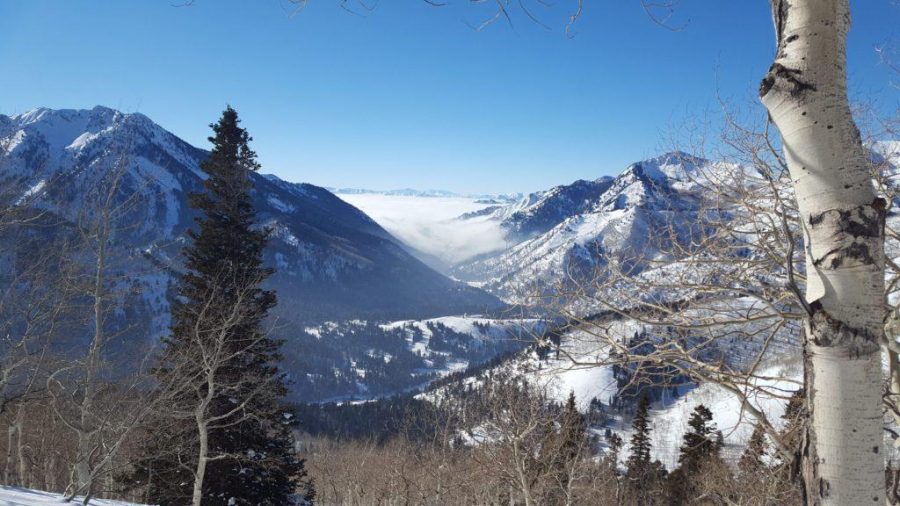Anybody visiting Utah in winter has seen it, smelled it, and maybe even tasted it. Our polluted air, which brought us into first place for the worst air quality in the U.S. last week, defines the state. Even non-skiers pray for snow days to clear out the brownish-yellow haze that looms above us. Storms mean clear skies and fresh air, for all is well again, right? Maybe things aren’t as pristine as they seem.
David Whitman, a research professor of atmospheric sciences at the University of Utah, explains that a snowstorm followed by a few days of clear skies sets up a “cold-air pool”. Whitman says that these cold fronts and snow storms cause cold temperatures near the ground. As air temperatures in the afternoon become warmer, pollutants mix and are carried over the mountains away from the Wasatch Front. This causes temporary “clean air”. But, when one of these cold-air pools sets up, there is less vertical mixing and pollutants become trapped within the valley. Snowstorms are simply a cover up, not a solution for Utah’s pollution problem.
Additionally, pollutants and temperature could be changing the snowfall more than we thought.
It’s widely known that dust and pollutants cause the snow to melt faster, but the U’s Atmospheric Science Department conducts research and experiments to see just how pollutants such as dust, aerosols and carbon gas emissions affect snowfall and snowflake formation. The studies, led by Professor John Horel, David Whitman, Tim Garrett and others, show that crystal structures are dependent on chemical influence and temperature. A change in these variables changes the structure. According to the studies, not only do pollutants make snow melt faster, but these added environmental variables make it more difficult to form in the first place.
Our Wasatch Front is famous for its signature fluffy, powdery snow. Utah’s desert climate and dry weather conditions give us the claim to fame of “The Greatest Snow on Earth,” but our world famous powder has to form under the correct conditions. A snowflake’s water content determines its shape and heaviness. More pollution means warmer weather, and warmer weather means more moisture in the air, which leads to heavier snow.
What does this mean for the future of snow in Utah? It could mean more artificial snow needed each year to keep resorts running. With rising temperatures, this also could mean less world famous powder and shorter seasons. While snow can be produced in a lab, a changing climate might forever change our renowned powder.
Photo by Carolyn Webber


